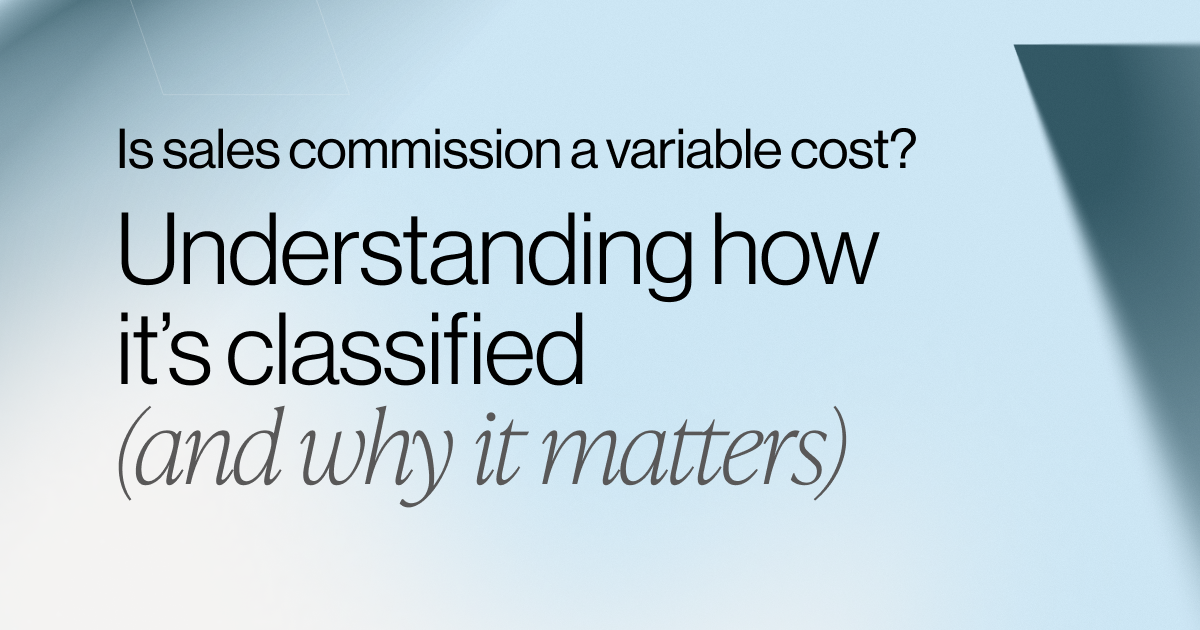Looking Beyond the Crystal Ball: Dynamic Sales Commission Forecasting
Sales commission is often the most costly line item in a financial statement. What’s tricky about commission costs is the numbers change frequently—and in many cases, the figures aren’t known until after a period closes.
Compensation is a function of sales, which is a variable. So, sales costs are always changing as the company adapts to growth and expansion. That’s why predicting sales commission expense is so cumbersome, time-consuming, and really frustrating if done wrong.
Poor forecasting leads to poor business decisions, which can lead to poor results. Without proper insight into commission numbers, finance leaders struggle to make smarter decisions when designing sales compensation (comp) plans and creating the annual company budget. It can almost feel like you have to look into a crystal ball to know what’s going on!
The good news is that the future isn’t set in stone. Finance leaders still have time to learn how to forecast the cost of sales dynamically, predict opportunities to improve the sales efficiency ratio, and align mission-critical numbers to broader financial goals.
3 Common Methodologies for Forecasting Commissions
Forecasting is the art and science of predicting what will happen in the future; when you're dealing with an already volatile market, though, you need to go the extra mile to make sure that you’re using suitable methodologies, tools, and techniques.
While there are many ways to approach forecasting sales commissions, let’s explore three common methodologies:
1. Assumed Commission Expense
In this methodology, your commission budget is calculated using industry benchmark compensation costs of sale percentages. The ideal use case for this methodology is setting your overall commission budget and ensuring commission expense is in line with industry benchmarks. Assumed Commission Expense is not a recommended methodology for budget forecasting when designing or confirming commission plans based on your sales team’s historical data and performance assumptions.
2. Monte Carlo Analysis
The Monte Carlo model uses statistically relevant numbers to predict outcomes over thousands of instances. This model can be used to calculate the probability commission results fall within a specific range. Ideally, it’s used to hypothesize compensation plan design changes and calculate high-level program sensitivities. However, you want to avoid using the Monte Carlo model when confirming commission plan design budgets and understanding the potential impact on performance-based teams.
3. Incumbent Analytical Model
This bottoms-up analysis calculates the impact of compensation changes on your sales team under various performance assumptions. The Incumbent Analytical model is best to analyze commission plan changes and confirm sales compensation financial impact. This model relies heavily on historical commissions data, as shown below.

Demystifying Sales Comp Expense Forecasts
When done right, dynamic sales commission forecasting can be a game-changer. Sales management can help define and dial-in specific rates, thresholds, accelerators, and performance assumptions. Revenue leaders can then proactively make comp plan changes that align with financial baseline goals. The result is everyone gets peace of mind knowing they are all working towards a plan that makes sense for the business, motivates sales reps, and helps the company achieve growth goals.
Flexibility is crucial when building out a sales commission forecast, especially when you have a lot of compensation plan nuances or complexities. With company data being stored among disparate systems, you need one source of truth that can ingest all the data, effectively implement rules, and run calculations with intuitive logic.
Want to see how CaptivateIQ and Workday Adaptive Planning can take your commissions management and forecasting to the next level?
.svg)


.png)





